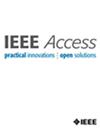TMFPMap-NVIG: Temporal Multi-Scale Fusion Perception Online HD Map Construction for Navigation of Visually Impaired Groups
IF 3.4
3区 计算机科学
Q2 COMPUTER SCIENCE, INFORMATION SYSTEMS
引用次数: 0
Abstract
Accurate online high-definition (HD) map construction is crucial for visually impaired individuals navigating complex outdoor environments. Existing methods relying on single-frame inputs suffer from occlusions and distortions in dynamic scenes. To address these challenges, this paper proposes TMFPMap-NVIG, a novel online HD map generation framework designed specifically for assistive navigation. TMFPMap-NVIG introduces an Adaptive Feature Extractor using multi-scale strategies for capturing global and local information, a Vectorized Element Decoder that integrates hierarchical decoding and critical region prioritization to generate detailed map elements, Temporal Query Mapping for cross-frame consistency of static elements, and a Multi-Frame Feature Aggregator enhancing spatiotemporal coherence via recursive feature updates. Evaluations conducted on the nuScenes and Argoverse2 datasets show TMFPMap-NVIG surpasses state-of-the-art methods by 4.8%-15.2% in mean Average Precision (mAP), with accuracy improvements of 7.3%, 4.9%, and 2.2% for detecting crosswalks, lane lines, and road boundaries, respectively, demonstrating robust performance under environmental disturbances.TMFPMap-NVIG:视障群体导航时相多尺度融合感知在线高清地图构建
准确的在线高清地图构建对于视障人士在复杂的户外环境中导航至关重要。现有的基于单帧输入的方法在动态场景中存在遮挡和失真的问题。为了解决这些挑战,本文提出了TMFPMap-NVIG,这是一种专门为辅助导航设计的新型在线高清地图生成框架。TMFPMap-NVIG引入了一个使用多尺度策略捕获全局和局部信息的自适应特征提取器,一个集成分层解码和关键区域优先级以生成详细地图元素的矢量化元素解码器,一个用于静态元素跨帧一致性的时间查询映射,以及一个通过递归特征更新增强时空一致性的多帧特征聚合器。在nuScenes和Argoverse2数据集上进行的评估显示,TMFPMap-NVIG的平均平均精度(mAP)比目前最先进的方法高出4.8%-15.2%,在检测人行横道、车道线和道路边界方面的精度分别提高了7.3%、4.9%和2.2%,在环境干扰下表现出稳健的性能。
本文章由计算机程序翻译,如有差异,请以英文原文为准。
求助全文
约1分钟内获得全文
求助全文
来源期刊

IEEE Access
COMPUTER SCIENCE, INFORMATION SYSTEMSENGIN-ENGINEERING, ELECTRICAL & ELECTRONIC
CiteScore
9.80
自引率
7.70%
发文量
6673
审稿时长
6 weeks
期刊介绍:
IEEE Access® is a multidisciplinary, open access (OA), applications-oriented, all-electronic archival journal that continuously presents the results of original research or development across all of IEEE''s fields of interest.
IEEE Access will publish articles that are of high interest to readers, original, technically correct, and clearly presented. Supported by author publication charges (APC), its hallmarks are a rapid peer review and publication process with open access to all readers. Unlike IEEE''s traditional Transactions or Journals, reviews are "binary", in that reviewers will either Accept or Reject an article in the form it is submitted in order to achieve rapid turnaround. Especially encouraged are submissions on:
Multidisciplinary topics, or applications-oriented articles and negative results that do not fit within the scope of IEEE''s traditional journals.
Practical articles discussing new experiments or measurement techniques, interesting solutions to engineering.
Development of new or improved fabrication or manufacturing techniques.
Reviews or survey articles of new or evolving fields oriented to assist others in understanding the new area.
 求助内容:
求助内容: 应助结果提醒方式:
应助结果提醒方式:


